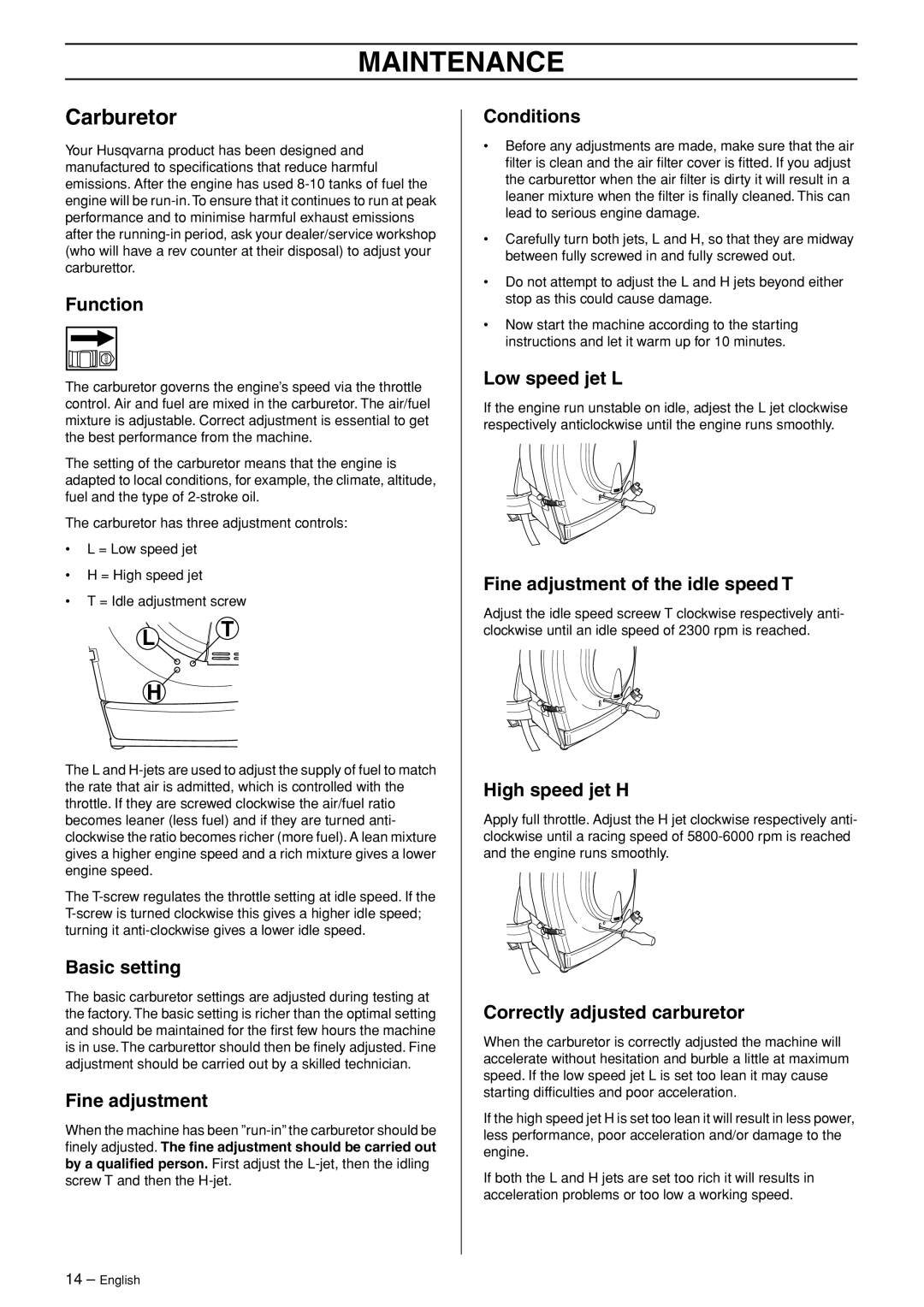
MAINTENANCE
Carburetor
Your Husqvarna product has been designed and manufactured to specifications that reduce harmful emissions. After the engine has used
Function
The carburetor governs the engine’s speed via the throttle control. Air and fuel are mixed in the carburetor. The air/fuel mixture is adjustable. Correct adjustment is essential to get the best performance from the machine.
The setting of the carburetor means that the engine is adapted to local conditions, for example, the climate, altitude, fuel and the type of
The carburetor has three adjustment controls:
•L = Low speed jet
•H = High speed jet
•T = Idle adjustment screw
L![]() T
T
H
The L and
The
Basic setting
The basic carburetor settings are adjusted during testing at the factory. The basic setting is richer than the optimal setting and should be maintained for the first few hours the machine is in use. The carburettor should then be finely adjusted. Fine adjustment should be carried out by a skilled technician.
Fine adjustment
When the machine has been
Conditions
•Before any adjustments are made, make sure that the air filter is clean and the air filter cover is fitted. If you adjust the carburettor when the air filter is dirty it will result in a leaner mixture when the filter is finally cleaned. This can lead to serious engine damage.
•Carefully turn both jets, L and H, so that they are midway between fully screwed in and fully screwed out.
•Do not attempt to adjust the L and H jets beyond either stop as this could cause damage.
•Now start the machine according to the starting instructions and let it warm up for 10 minutes.
Low speed jet L
If the engine run unstable on idle, adjest the L jet clockwise respectively anticlockwise until the engine runs smoothly.
Fine adjustment of the idle speed T
Adjust the idle speed screew T clockwise respectively anti- clockwise until an idle speed of 2300 rpm is reached.
High speed jet H
Apply full throttle. Adjust the H jet clockwise respectively anti- clockwise until a racing speed of
Correctly adjusted carburetor
When the carburetor is correctly adjusted the machine will accelerate without hesitation and burble a little at maximum speed. If the low speed jet L is set too lean it may cause starting difficulties and poor acceleration.
If the high speed jet H is set too lean it will result in less power, less performance, poor acceleration and/or damage to the engine.
If both the L and H jets are set too rich it will results in acceleration problems or too low a working speed.
14 – English
